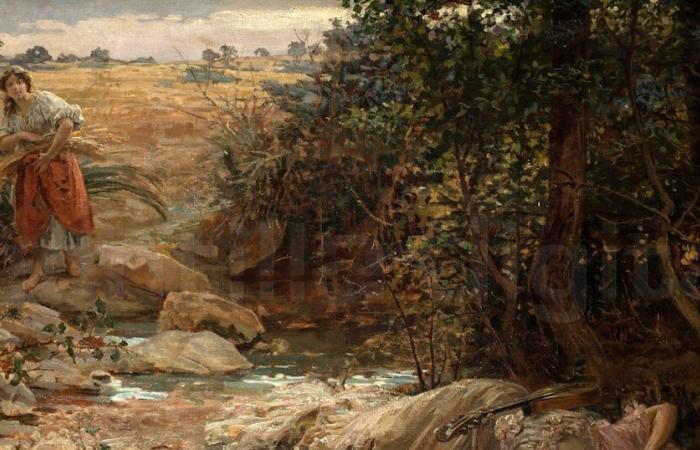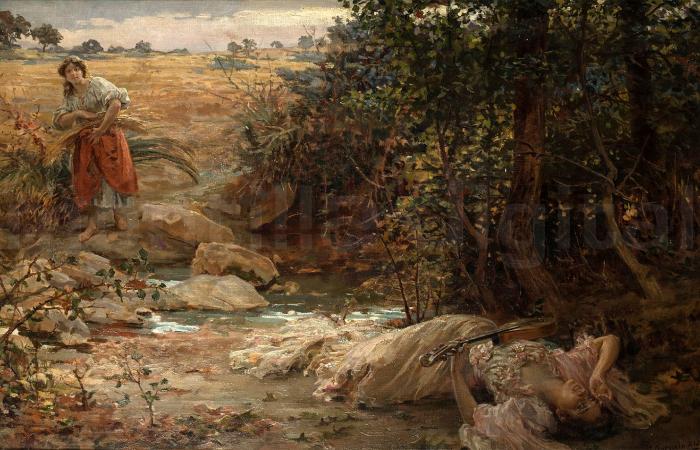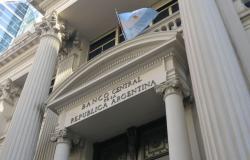Summer allegory It is a canvas dated in 1905 that has aroused a remarkable interest among art specialists for its artistic value, its biographical context and its connection with Montilla, the city in which the artist resided since he had only one year of age and where he wanted to be buried after his death, on October 29, 1944.
As confirmed to EFE the director of the School of Art and Higher Design “Mateo Inurria” of Córdoba, Miguel Carlos Clementson Lopea reputed specialist in the figure of Garnelo, the painting

The work, which had remained for decades outside the exhibition circuit, represents, in the words of the expert, “a young woman dressed in an elegant clothing, which informs us about her social status, a figure lying next to a stream, resting in the shadow of some shrub Look at the somewhat perplexed scene. ”
The oil, 81 by 127.5 centimeters, starts with a minimum exit price of 4,000 euros. Dated and signed by the artist himself in the lower right angle, his discovery is, in Clementson’s opinion, “of extreme interest”, since it allows to complete the knowledge about the production of the Montillano artist in a stage of artistic maturity, “when he already fristed the forty years.”
In 1905, date of the work, José Garnelo was already a consolidated artist, based in Madrid after having obtained the Drawing Chair of the Old and clothes at the Higher School of Fine Arts of San Fernando. A year earlier had composed Pro patria Semperan allegory of the crisis of 98, and Capea in Las Navas del Marquéswhich he presented at the Paris Hall. Both pieces, fundamental in their trajectory, are part of the museum today that bears his name in Montilla.

The appearance of Summer allegory It could have its origin in a particular collection, like many other works by Garnelo, which would explain its absence in the exhibitions and monographic studies that have been carried out on it to date. However, although it cannot be considered an “unpublished” work strictly, it is a relevant finding that sheds new light on a fertile stage of his career, in the opinion of Miguel Carlos Clementson who, on April 22, starred in the Closing of the Cultural Meetings of the Cajasol Foundation.
A painter between two centuries
Considered the most cultured painter of his time, José Garnelo and Alda was, in addition to an excellent artist, a great pedagogue and a demanding researcher. Born in 1866 in the Valencian town of Enguera, his family set his residence in Montilla when the artist had only one year of age. Before moving to Madrid to begin his studies at the Royal Academy of Fine Arts of San Fernando, José Garnelo attended two courses from the School of Fine Arts in Seville, where he won several awards from the Santa Isabel de Hungary School.
Garnelo was also an artist always respectful of the avant -garde. After getting the second medal in the National Exhibition of 1887 with Lucano’s deaththe Montillano artist was pensioned to the Academy of Spain in Rome, where he remained four years in which he shared experiences with artists such as Pradilla, Sorolla or Emilio Sala.

After touring Europe for some years, in 1883 he went to the Universal Exhibition of Chicago, where he conquered the gold medal for his first tributes in the New World to Columbusa painting that came to illustrate the poster of the exhibition that the Naval Museum of Madrid organized in 2006 on the occasion of the fifth centenary of the death of Admiral of the Ocean Sea.
Appointed deputy director of the Provincial School of Fine Arts of Zaragoza, in 1894 José Garnelo won a contest promoted by the Royal Academy of San Fernando and was appointed Knight of the Royal and distinguished order of Carlos III. A year later, the artist moved to Barcelona to teach at the School of Fine Arts, where Pablo Ruiz Picasso attended as a student, who painted The first communion and the Monaguillo in the study that Garnelo had in the University Square.
After obtaining by opposition the Drawing Chair of the Old and Rapajes of the School of San Fernando de Madrid, in 1902 he was appointed Commander of the Order of Alfonso XII and painter of the Crown. In fact, Infanta Isabel commissioned Mariano Benlliure and Emilio Sala – the decoration of her palace on Quintana Street, where Garnelo developed The proclamation of the Catholic Monarchs in Segovia.

Appointed deputy director of the painting of the National Museum of Painting and Sculpture – currently, Museo del Prado – in 1917 he received the commission of making several portraits of the royal family, among which two of Alfonso XIII that are preserved in the Spanish Museum of Contemporary Art and in the Palace of Aranjuez.
Already sick, in 1924 he managed to finish the decoration of the dome of the hall of the President of the Supreme Court of Madrid, at the Palacio de las Salesas, with The Justice Collarhis most outstanding fresco work. Five years later, he wanted Apostleship which can be admired in the parish of Santiago Apostle of Montilla.
After being proposed to direct the Spanish Academy of Fine Arts of Rome, José Garnelo retired in 1936 as a professor of the School of Painting, Sculpture and Engraving of Madrid, where he maintained a close relationship with contemporary painters of the like Gutiérrez Solana, Picasso, Vázquez Díaz or Salvador Dalí, to which he taught. After spending his last years in a state of semi -inconsecience, he died in Montilla on October 29, 1944, being buried in the pantheon that his family has in the temple nestled in listening.











